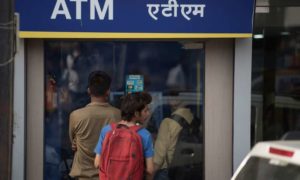India’s forex reserves rose to the highest in three weeks in the last week of July, supported by robust capital inflows and the rupee’s weakening reversal to sharp gains from 80 per dollar to below 79.
The Reserve Bank of India’s weekly supplementary statistical data showed forex reserves rose by $2.315 billion to $573.875 billion in the week ending July 29, from $571.560 billion in the prior week.
That marks the highest FX reserves in three weeks and snaps a four-week falling trend.
Read More:-RBI Policy Rate Likely To Cross 6 Percent This Fiscal, Says Report
The Reserve Bank of India has burned the country’s forex reserves in its attempt to shore up the rupee by selling dollars in the spot and futures market, especially since Russia invaded Ukraine and the rupee crashed to 77 per dollar for the first time ever and hurled lower to breach 80 against the greenback, its all-time weak level.
While the rupee has fallen significantly from about 74 per dollar at the start of the year, the RBI’s intervention has helped limit the currency from weakening even more sharply and wildly.
The RBI, for its part, has said it was ready to do whatever it takes to stabilise the rupee. Indeed, RBI Governor Shaktikanta Das had said, “you buy an umbrella to use it when it rains!’, indicating that the central bank is using foreign exchange reserves to deal with currency volatility.
Read More:-ED Raids Crypto Currency Exchange WazirX, Assets Worth ₹64.67 Crores Frozen | Key Points
The rupee’s recent strength has supported the latest reversal in India’s import cover. The currency hit a one-month high on Tuesday, trading below 79 per dollar on significant capital inflows in recent days and as the greenback stumbled on easing bets of aggressive Federal Reserve monetary action amid recession fears.
Foreign institutional investors turned net buyers of Indian assets for the first time in a year in July. That trend has continued, bringing relief to the rupee and the country’s import cover.
Indeed, after nine consecutive months of relentless selling, foreign investors have turned into net buyers and invested nearly ₹ 5,000 crore in Indian equities in July on softening dollar index and good corporate earnings.
Read More:-NPS: Invest Rs 10,000 to generate Rs 1.5 lakh per month pension, here’s how
That is in sharp contrast to a net withdrawal of ₹ 50,145 crore from the stock market seen in June. The reversal in July was the highest net outflow since March 2020, when foreign portfolio investors (FPIs) had pulled out ₹ 61,973 crore from equities, data with depositories showed.
FPIs turned net buyers for the first time in July after nine straight months of massive net outflows, which started in October last year.
Between October 2021 and June 2022, they sold a mammoth ₹ 2.46 lakh crore in the Indian equity markets.
Read More:-ITR Refund: Filed ITR? Know How to Check Refund Status, When You Will Get It
The recent international investors’ sentiment in favour of Indian assets could be a reversal of a deep sell-off in Indian equities, and many experts point to that pattern as a turning point for markets.
“This gives us a positive signal that things may not be that bad for foreign investments in equity markets,” Madan Sabnavis, Chief Economist at Bank of Baroda, had told NDTV.
“If this trend continues, it could be a turning point for the equity markets; it would also help the rupee as foreign outflows pulling out money has been dragging rupee,” he had added.
That is good news for India and the country’s war chest at a time other smaller economies face a crisis at hand as they fight with low forex reserves.
The country’s foreign currency assets (FCAs) rose by $1.121 billion to $511.257 billion, and gold reserves were up by $1.14 billion to $39.642 billion during the week ending July 29.
A significant portion of total reserves is FCAs, which are expressed in dollar terms as the greenback is considered the world’s reserve currency and takes into account the rise or fall in non-US currencies, such as the euro, sterling and yen, held in FX reserves.
On Friday, the RBI hiked its key lending rate by a larger than expected 50 basis points to the highest since 2019, and hinted at more steps to stabilise inlfation and the rupee.





































